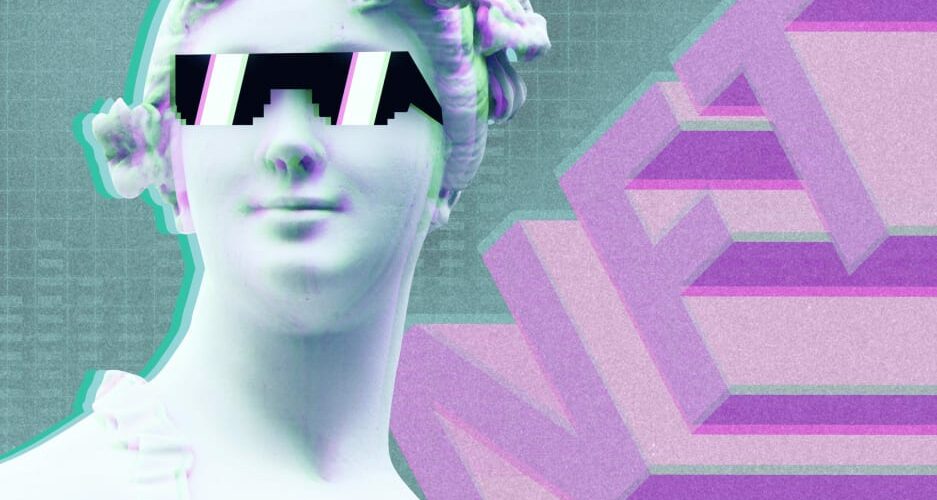NFTs
4 Changes in the NFT Space That Will Inform the Future of Art and Web3
Four recent developments in the Web3 space illustrate the way NFTs are not only changing the art world, but becoming the future of asset ownership and exchange for Web3.
NFTs have come a long way since their ideation ten years ago.
The concept was first proposed in 2012 as “colored coins,” or trackable bitcoins that had non-fungible built-in token utility. The first NFT—Quantum, by Kevin McCoy—debuted in May 2014, but NFTs really took off when they found a home on the Ethereum blockchain, which allowed for tokenization, contracts, and other utilities that NFTs inherently needed.
Since then, NFTs have boomed in popularity and presented a new way for artists to mint and sell work, connect directly with their audience, and provide proof of ownership.
Four recent developments in the Web3 space illustrate the way NFTs are not only changing the art world, but becoming the future of asset ownership and exchange for Web3.
1. INCREASED INVESTMENTS
Recent innovations associated with NFTs have solved many of the questions surrounding digital asset ownership, and as such, there’s been an increase in investment into the NFT space.
In May, Andreessen Horowitz announced that it had created a $4.5 billion fund to focus on backing crypto and blockchain companies. Overall, investments in blockchain start-ups soared to $25.2 billion in 2021, with many investing companies focused on building Web3. Sotheby’s made its first investment into the space by backing an NFT start-up during its $20 million seed round, and Ebay purchased early-art NFT platform KnownOrigin in June.
At this year’s NFT.NYC, the message and the energy were clear: it’s time to build.
2. REIMAGINING BUSINESS FRAMEWORKS
Web3’s growing reputation is continuing to capture the attention of entrepreneurs from all industries who recognize the possibilities offered by NFTs, digital ownership, DAOs (decentralized autonomous organizations), and other Web3 innovations. For example, the community TryYourBest is a consumer-directed product market research initiative that allows participants to co-create with their favorite brands and earn rewards.
Another example is CaféDAO, a “DAO powered pop-up coffee stand” which has adopted the decentralized, bottom-up governance structure of DAOs. While DAOs are new and largely still learning the best ways to organize and operate, they are incredibly exciting models for the future of ownership, participation, and employment in this new digital economy.
3. ACCESS, INCLUSIVITY, AND EXCLUSIVITY
NFTs have completely upended the way that the world—including students and spectators, artists and collectors—is able to consume art. The internet has made it possible for anyone with an internet connection to create and connect with an audience. With smart contracts, creators can now monetize these connections, collectors can be the verifiable owners of digital assets, and these artworks and transactions live on the internet and blockchain, available for everyone to see.
With so much access, it’s not surprising that we are seeing members-only clubs popping up within the Web3 world. These clubs use membership tokens to give holders exclusive access to drops and other alpha.
However, there are still those of us pushing toward further inclusivity and democratization of opportunity. One such example is Foundation—a major art platform in NFTs—which announced that it was moving away from its community curation model and opening up doors to all creators. Foundation’s open protocol, os.foundation.app, also presents composable building blocks and an ecosystem of applications that allow anyone to create their own Web3 apps and experiences. As its tagline aptly declares, “A new world is possible!”
4. MORE IRL EXPERIENCES
NFTs live in the digital realm, but can also be tied to real-world items. Similarly, while the NFT community exists vibrantly online, it’s also finding ways to connect in real life—especially among art lovers.
SuperRare has launched a gallery space in NYC’s SoHo, while Bright Moments continues to host exhibitions and experiences in physical spaces internationally. Additionally, DAOs and organizations like FWB and BoysClub (the name is tongue-in-cheek—it’s actually for women!) host dinners, panels, talks, and get-togethers, all in the name of culture, education, and real, in-person connection.
For artists and collectors who are new to the space, joining a DAO can be a great way to learn about Web3, meet other artists and collectors, and build a foundation for yourself within the community.
THE FUTURE OF NFTs
Despite the recent downtrend in the crypto market, the underlying technology of NFTs and smart contracts points to a solid future for NFTs, as they provide new ways for individuals to connect, create, and earn. If you’re an art lover, I think it’s a great time to invest in artists you love. Participating in this economy can not only help to support an emerging artist, but will also define the future of the art world and Web3.
This article is taken from a guest post by Monty Preston, Saatchi Art’s NFT Curator, for Fast Company. You can read the article on Fast Company here.
Love reading about all things art? You can have curated collections, stories about emerging artists, and more delivered straight to your inbox. Sign up for the Saatchi Art Newsletter.






